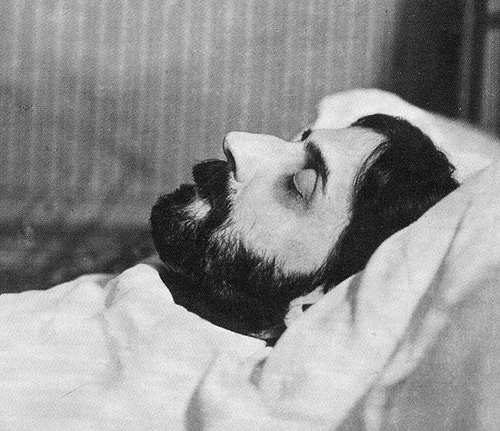Thanks to the wonderful Browser, I came across one of the three best pieces I’ve read so far this year (along with this one and this one), Roger Highfield’s eye-opening Mosaic article “The Mind Readers,” which focuses on the life that lingers beneath the surface when humans are rendered into a vegetative state. A passage:
“Half a century ago, if your heart stopped beating you could be pronounced dead even though you may have been entirely conscious as the doctor sent you to the morgue. This, in all likelihood, accounts for notorious accounts through history of those who ‘came back from the dead’. As a corollary, those who were fearful of being buried alive were spurred on to develop ‘safety coffins’ equipped with feeding tubes and bells. As recently as 2011, a council in the Malatya province of central Turkey announced it had built a morgue with a warning system and refrigerator doors that could be opened from the inside.
What do we mean by ‘dead’? And who should declare when an individual is dead? A priest? A lawyer? A doctor? A machine? [Adrian] Owen discussed these issues at a symposium in Brazil with the Dalai Lama and says he was surprised to find that they both agreed strongly on one point: we need to create an ethical framework for science that is based on secular, rather than religious, views; science alone should define what we mean by death.Near death experience
The problem is that the scientific definition of ‘death’ remains as unresolved as the definition of ‘consciousness’. Much confusion is sowed by the term ‘clinical death’, the cessation of blood circulation and breathing. Even though this is reversible, the term is often used by mind–body dualists who cling to the belief that a soul (or self) can persist separately from the body. Today, however, being alive is no longer linked to having a beating heart, explains Owen. If I have an artificial heart, am I dead? If you are on a life-support machine, are you dead? Is a failure to sustain independent life a reasonable definition of death? No, otherwise we would all be ‘dead’ in the nine months before birth.
The issue becomes murkier when we consider those trapped in the twilight worlds between normal life and death – from those who slip in and out of awareness, who are trapped in a ‘minimally conscious state’, to those who are severely impaired in a vegetative state or a coma. These patients first appeared in the wake of the development of the artificial respirator during the 1950s in Denmark, an invention that redefined the end of life in terms of the idea of brain death and created the specialty of intensive care, in which unresponsive and comatose patients who seemed unable to wake up again were written off as ‘vegetables’ or ‘jellyfish’. As is always the case when treating patients, definitions are critical: understanding the chances of recovery, the benefits of treatments and so on all depend on a precise diagnosis.”

